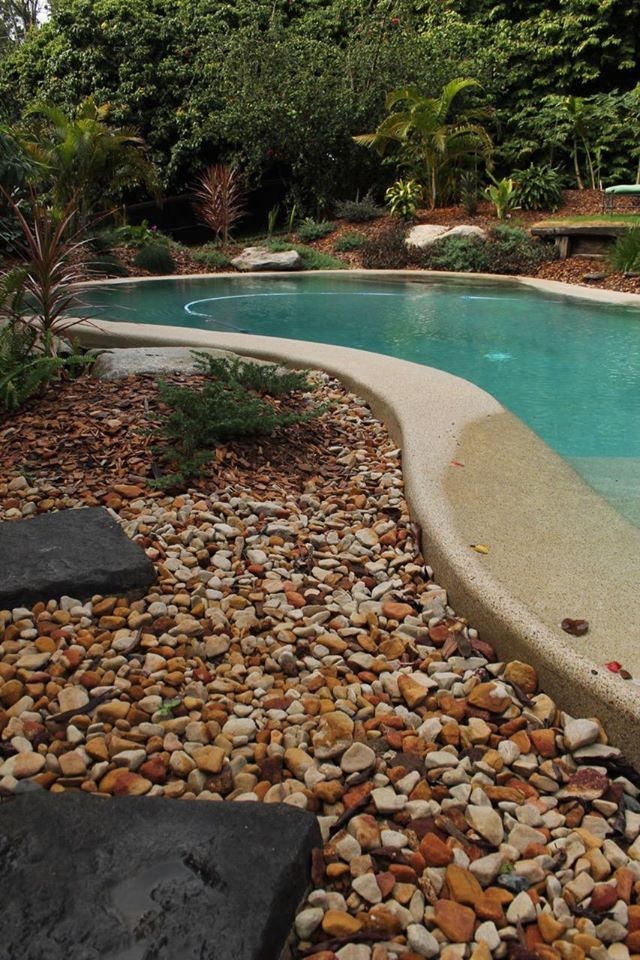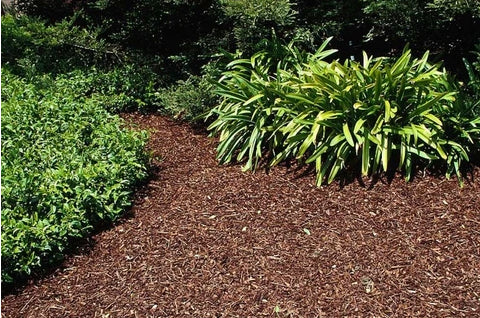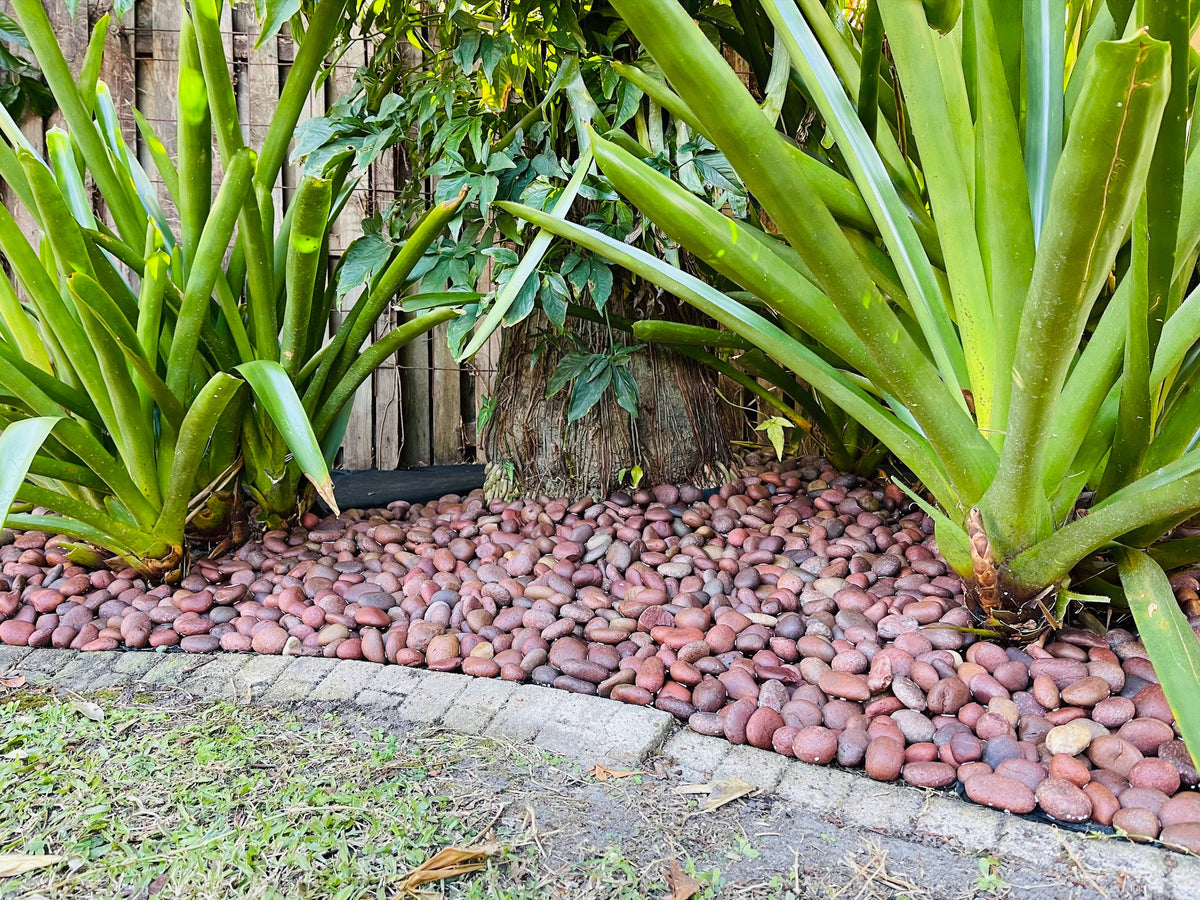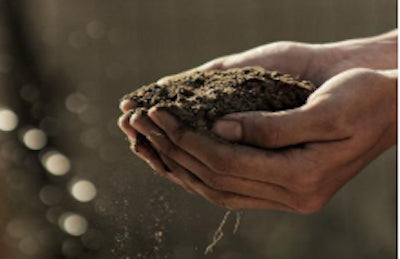Your Cart is Empty
Mon-Fri: 6.30am-4.30pm | Sat: 7am-1pm | Sun: 9am-1pm
18 Kerryl Street, Kunda Park
Mon-Fri: 6.30am-4.30pm | Sat: 7am-1pm | Sun: 9am-1pm
18 Kerryl Street, Kunda Park

Heat and water are the dynamic duo that aid growth in the garden, and there has been no shortage of both on the Sunshine Coast in the past month! The best way to maximise the benefits of both is to mulch. Mulching reduces moisture loss from the soil surface. This aids plant growth, and reduces the need to water. It also lessens the chance of the soil surface drying out and cracking.

When applied correctly, mulch suppresses weed growth, reduces competition for water and nutrients, and decreases the amount of ‘weeding time’ necessary to maintain your garden. Organic mulches add nutrients to the soil and improve soil structure as they break down, as well reducing run-off and soil movement from garden beds.
There are loads of mulches to choose from (no pun intended), and it is important that you choose the correct one for your particular project. Here is a little run down of the different types of mulch and their best uses:
Organic Mulches
Organic mulches add nutrients to the soil as they break down, but the rate and extent of this addition varies according to their composition and particle size.
1.Wood Chips
These by-products of the timber industry. Because of their usually large size and freedom from weeds and pesticides, make good mulch. They tend to break down slowly, and use nitrogen from the soil as they do so. This can be overcome by sprinkling some organic nitrogen-containing fertiliser on the ground before spreading them. It is best used around native plants with low nutrient requirements.
2. Shredded Bark
This is also a byproduct of the timber industry – pine or hardwoods. It is best used on general garden beds. Like wood chips, it also draws nitrogen from the soil as it breaks down.
3. Straw
Straw is the stem material from grains and legumes which remains after a crop has been harvested. It is a light mulch which breaks down relatively fast. Straw from legumes are fantastic because they are high in nitrogen. They are best used where the high nutrient content is important, such as a vegetable garden, and any mulch remaining after the growth season can be dug in. A disadvantage is that seeds may grow – but they are generally easy to get rid of.
4. Grass Clippings
Grass clippings break down fast and add nutrients to the soil. If fresh, grass clippings should be applied in thin layers because they can start to rot when wet. Alternatively, they can be applied more thickly if they are first dried. There is a risk, though that that seeds from the grass (or weeds in it) start to germinate.
5. Compost
A thick layer of compost can be used as mulch. It breaks down faster than the above products, so would need to be replaced regularly. Compost is best used as a soil conditioner and many gardeners apply a layer of one of the above products on top of it.
Inorganic Mulch
1. Rocks and gravel
There are occasions when inorganic mulches are suitable because they don’t breakdown quickly and don’t need reapplication. The downside is that they don’t add nutrients to the soil. They tend to be more decorative in nature (especially pebble). But they are also terrific when used in smaller areas like courtyard gardens, in the bases of large potted plants, around water features and ponds.
Pebble looks attractive and helps keep the soil warm, but they may absorb too much heat and damage your plants. They are more particularly suitable for drought-resistant Australian natives plants or cacti.
How to Apply Mulch
For best results, follow these simple steps before applying mulch:
You can see our range of organic mulches here and our range of decorative pebble, here.
If you are unsure about which type would be best for your project, or how much you need, please don't hesitate to give our friendly staff a call on 5453 7100 and we can put you on the right track.

Mulching is one of the most important Winter garden jobs because it insulates the soil, retains moisture and suppresses weed growth.

Stunning Kashmiri Polished Red Pebbles have deep, rich and vibrant colour tones and are available to order in 20kg bags.

We are excited to announce that our soils are now certified AS 4419. AS 4419 is an Australian Standard that provides guidelines for producing and using soils in landscaping and garden applications.